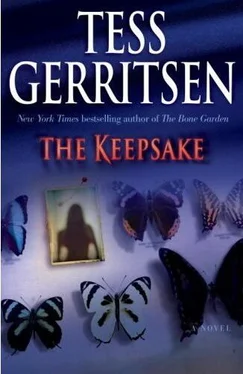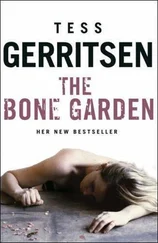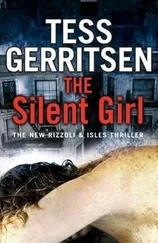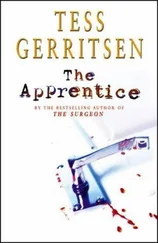By the time she came out of the bedroom, the smell of brewing coffee was permeating the house. She followed the scent to the kitchen, where Sansone had already pulled two mugs from the cabinet.
“I hope you don’t mind that I took the liberty of making a fresh pot.”
She watched as he picked up the carafe and poured, his broad back turned to her. He looked perfectly at home in her kitchen, and it annoyed her how effortlessly he had invaded her house. He had the knack of walking into any room, in any house, and just by his presence laying claim to the territory.
He handed her a cup, and to her surprise he’d added just the right amount of sugar and cream, exactly as she liked it. It was a detail she hadn’t expected him to remember.
“It’s time to talk about Madam X,” he said. “And what you may really be dealing with.”
“How much do you know?”
“I know you have three linked deaths.”
“We don’t know they’re linked.”
“Three victims, all preserved in grotesque ways? That’s a rather unique signature.”
“I haven’t done the autopsy on the third victim, so I can’t tell you anything about her. Not even how she was preserved.”
“I’m told it wasn’t a classic mummification.”
“If by classic you mean salted, dried, and wrapped, no, it wasn’t.”
“Her features are relatively intact?”
“Yes. Remarkably so. But her tissues still retain moisture. I’ve never autopsied a body like this one. I’m not even sure how to keep her preserved in her current state.”
“What about the owner of the car? She’s an archaeologist, isn’t she? Does she have any idea how the body was preserved?”
“I didn’t speak to her. From what Jane told me, the woman was pretty shaken up.”
He set down his coffee cup and his gaze was so direct it almost felt like an assault. “What do you know about Dr. Pulcillo?”
“Why are you asking about her?”
“Because she works for them, Maura.”
“Them?”
“The Crispin Museum.”
“You make it sound like a malevolent institution.”
“You agreed to view the CT scan. You were part of that media circus they organized around Madam X. You must have known what you were getting into.”
“The curator invited me to observe. He didn’t tell me there would be a media circus. He just thought I’d be interested in watching the scan, and of course I was.”
“And you didn’t know anything about the museum when you agreed to participate?”
“I visited the Crispin a few years ago. It’s a quirky collection but it’s worth seeing. It’s not that different from a number of other private museums I’ve visited, founded by wealthy families who want to show off their collections.”
“The Crispins are something of a special family.”
“What makes them special?”
He sat down in the chair across from her so their gazes were level. “The fact that no one really knows where they came from.”
“Does it matter?”
“It’s a bit curious, don’t you think? The first Crispin on record was Cornelius, who surfaced in Boston in 1850. He claimed to be a titled Englishman.”
“You’re implying it wasn’t true.”
“There’s no record of him in England. Or anywhere else, for that matter. He simply materialized on the scene one day, and was said to be a handsome man of great charm. He married well and proceeded to build his wealth. He and his descendants were collectors and tireless travelers, and they brought home curiosities from every continent. There were the usual items-carvings and burial goods and animal specimens. But what Cornelius and his family seemed especially interested in were weapons. Every variety of weapon used by armies around the world. It was an appropriate interest of theirs, considering how their fortune was made.”
“How?”
“Wars, Maura. Ever since Cornelius, they’ve been profiteers. He became wealthy during the Civil War, running weapons to the South. His descendants continued the tradition, profiting from conflicts all over the world, from Africa to Asia to the Middle East. They made a secret pact with Hitler to provide weapons for his troops, and simultaneously armed the Allied forces. In China, they supplied both the Nationalist and the Communist armies. Their merchandise ended up in Algiers and Lebanon and the Belgian Congo. It didn’t matter who was fighting whom. They didn’t take sides; they just took the money. As long as blood was being shed somewhere, they stood to make a profit.”
“How is this relevant to the investigation?”
“I just want you to understand the background of this institution, and what kind of legacy it carries. The Crispin Museum was paid for with blood. When you walk through that building, every gold coin you see, every piece of pottery, was paid for by a war somewhere. It’s a foul place, Maura, built by a family that hid its past. A family whose roots we’ll never know.”
“I know where you’re going with this. You’re going to tell me the Crispins have a demonic bloodline. That they’re descended from the biblical Nephilim.” She shook her head and laughed.
“Please. Not the Dead Sea Scrolls again.”
“Why do you think Madam X ended up in that museum?”
“I’m sure you have an answer.”
“I have a theory. I think she was a form of tribute. So was the shrunken head. They were donated by an admirer who understands exactly what the Crispin family represents.”
“The third victim wasn’t found in the museum. The body was placed in Dr. Pulcillo’s car.”
“She works for the museum.”
“And she’s now terrified. Her keys were stolen and someone sent her one hell of a gruesome gift.”
“Because she was an obvious go-between for the intended recipient, Simon Crispin.”
“No, I think Dr. Pulcillo is the intended recipient. She’s a strikingly pretty woman and she’s caught a killer’s eye. That’s what Jane believes as well.” She paused. “Why aren’t you talking to her about this? She’s the investigator. Why come to me?”
“Detective Rizzoli’s mind is closed to alternative theories.”
“Meaning she’s firmly grounded in reality.” Maura rose to her feet. “So am I.”
“Before you dismiss this out of hand, maybe you should know one more thing about the Crispin collection. The part of the collection that no one ever saw. It was kept hidden away.”
“Why?”
“Because it was so grotesque, so upsetting, that the family couldn’t afford to let the public know about it.”
“How do you know about this?”
“For years, there were rumors about it in the antiquities market. About six years ago, Simon Crispin put it up for private auction. It seems he’s been quite the spendthrift and he’s managed to go through what was left of his family’s fortune. He needed to raise cash. He also needed to dispose of embarrassing and possibly illegal items. The truly disturbing part is, he actually found a buyer, whose name remains anonymous.”
“What did Crispin sell?”
“War trophies. I don’t mean army medals and rusty bayonets. I’m talking about rattles made with human teeth from Africa and severed ears from Japanese soldiers. A necklace strung with fingers and a jar with women’s…” He stopped. “It was a horrifying collection. The point is, I’m not the only one who knew about the Crispin family’s interest in grotesque souvenirs. Maybe this archaeology killer did, too. And he thought he’d contribute to their collection.”
“You believe they were gifts.”
“Tokens of admiration from some collector who donated a few of his own keepsakes to the museum. Where they’ve been sitting, forgotten.”
“Until now.”
Sansone nodded. “I think this mysterious donor has decided to resurface. He’s letting the world know that he’s still alive.” He added, quietly: “There may be more such gifts coming, Maura.”
Читать дальше












